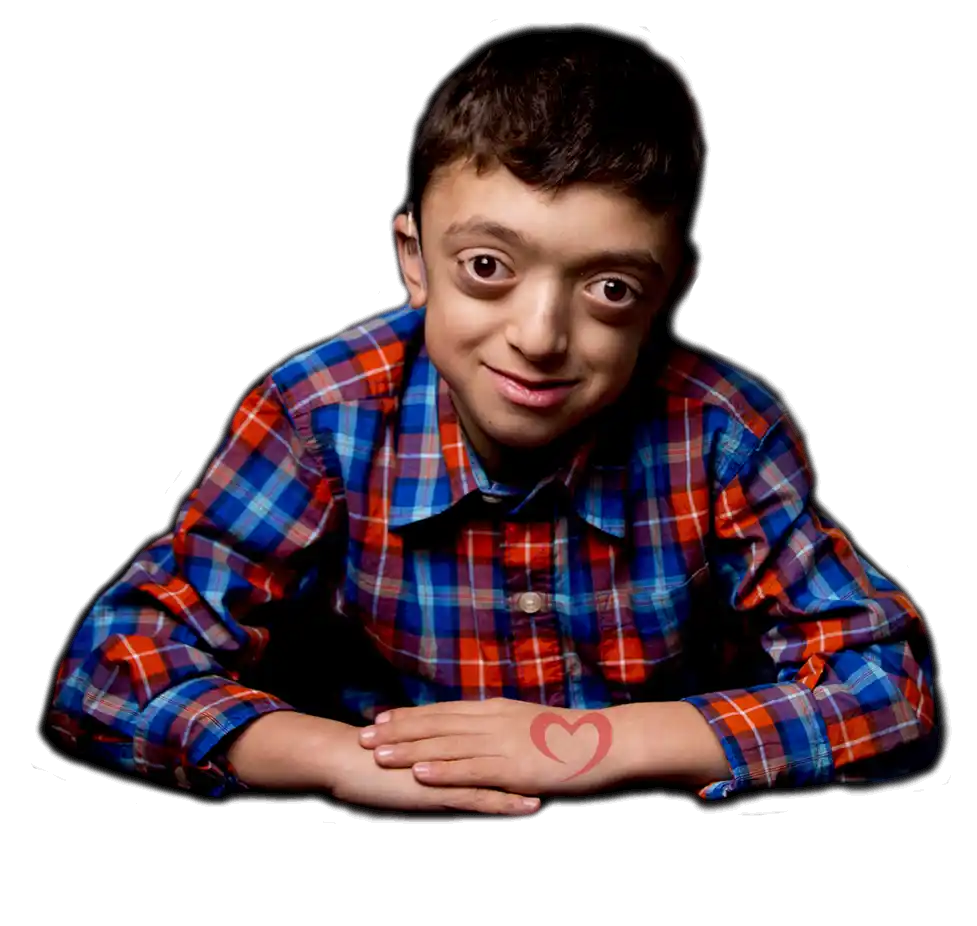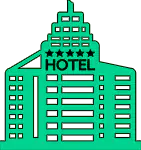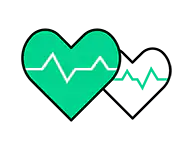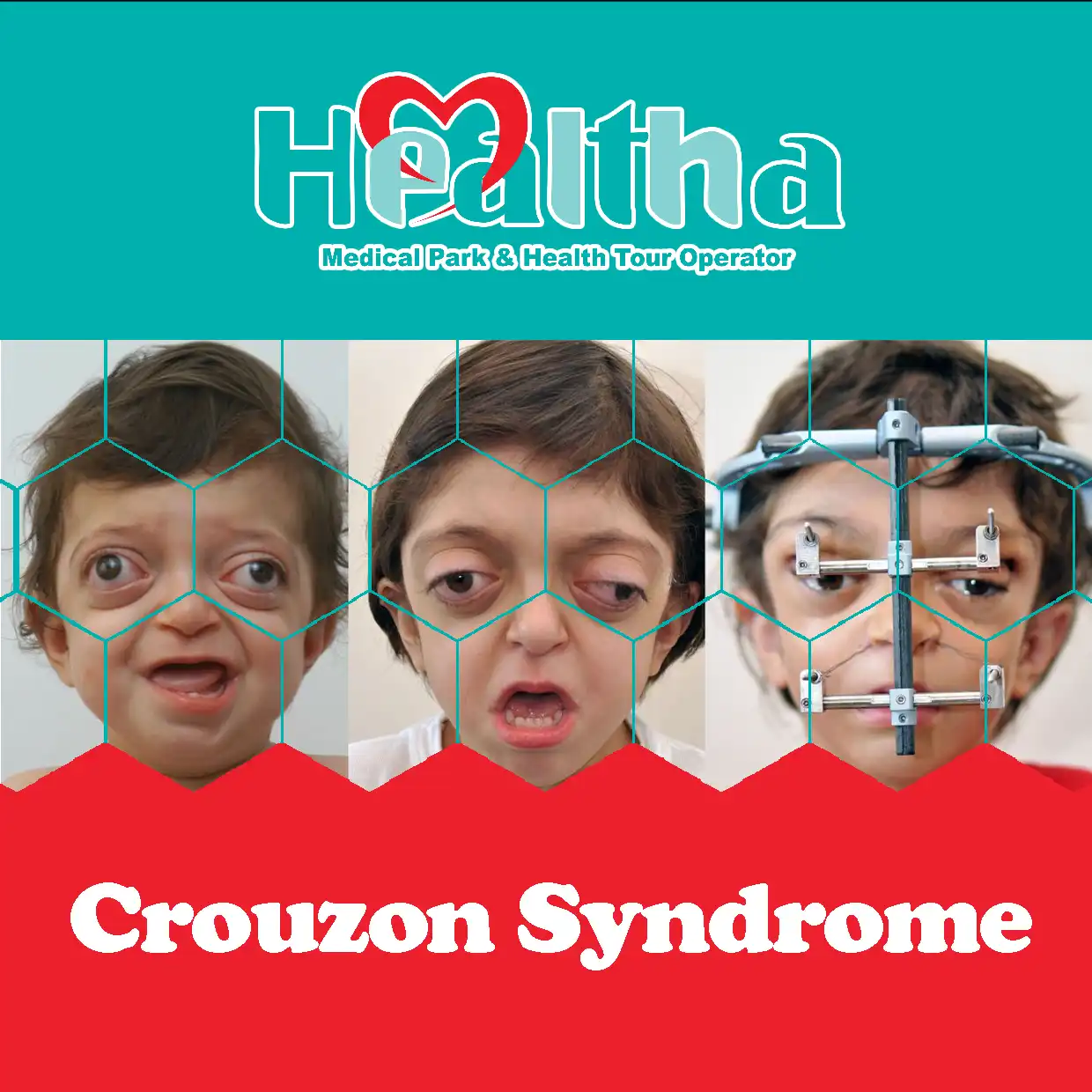Crouzon syndrome is a rare genetic disease that occurs due to genetic differences and the so-called silencing of a gene that causes the skull to deform and affects the bones of the middle part of the face and will lead to facial and eye malformations for the affected person. On the other hand, Iran has a healthcare infrastructure with low cost and high quality regarding Crouzon syndrome treatment. In the following, we will discuss Crouzon syndrome treatment in Iran.





All rare and special diseases have genetic roots and the only effective way to reduce these diseases is prevention. Rare diseases have different definitions and according to European definitions, they are called diseases whose frequency is between 1,2, 3, 4 or 5 in ten thousand.
Many people confuse rare diseases with special diseases, while certain diseases include a group of diseases such as thalassemia and hemophilia, which are very common in Iran and have found a special position in the country, namely, none of them are rare, but it is possible that its frequency would be low in a geographical location but suddenly it may become an epidemic.
In terms of the price of health services, Healtha aims to offer the most competitive prices with other countries so that the price of Healtha services is much lower than the price of similar services around the world.
In this section, you can watch videos related to your treatment.
These videos are just a small part of a big change in Healtha.
Our patients’ experience of Healtha treatment
The severity of signs and symptoms can vary among affected people, even within a family. Intelligence is usually normal, but intellectual disability may be present. Crouzon syndrome is inherited in an autosomal dominant manner.
inflammation in the front of the eyes (exposure keratitis)
or in the membrane lining the whites of the eyes (exposure conjunctivitis)
drying of the clear outer covering of the eye (cornea)
fluid buildup in the brain (hydrocephalus)
A skull that appears “too tall” and overly flat from the middle part of the face upward.
Small cheeks and a concave (curved inward) facial profile.
A prominent nasal bridge (a “beaked” nose)
Wide-set, bulging eyes.
Crossed eyes (strabismus)
Underdeveloped upper jaw.
In addition to these physical characteristics, your child may have:
Dental problems due to crowded teeth and a narrow palate
Poor vision
Ear conditions and hearing loss (in about 50 percent of children)
Difficulty breathing due to small airway
You can contact the Healtha Response Center by visiting the website and completing the consultation form and providing communication channels, including your phone number, mobile phone, and email.
You can contact the Healtha Response Center by visiting the website and completing the consultation form and providing communication channels, including your phone number, mobile phone, and email.
Healtha has a representative office in many countries of the world, where you can negotiate for more information and to obtain a Healtha representative visa. You can also obtain a health visa to travel to Iran by consulting with us and visiting the Iranian embassy. Also, airline ticket services, transportation, reception, translator, hotel, treatment, in-city and out-of-city tour will be provided during your stay in Iran.
This depends on the choice of operation packages from A to B. And Healtha is one of the best health tourism parks in Asia with very reasonable prices and excellent medical staff in the world for health travelers to travel to Iran.
Crouzon syndrome is a rare genetic disease that occurs due to genetic differences and the so-called silencing of a gene that causes the skull to deform and affects the bones of the middle part of the face and will lead to facial and eye malformations for the affected person. On the other hand, Iran has a healthcare infrastructure with low cost and high quality regarding Crouzon syndrome treatment. In the following, we will discuss Crouzon syndrome treatment in Iran.
all rare and special diseases have genetic roots and the only effective way to reduce these diseases is prevention. Rare diseases have different definitions and according to European definitions, they are called diseases whose frequency is between 1,2, 3, 4 or 5 in ten thousand.
Many people confuse rare diseases with special diseases, while certain diseases include a group of diseases such as thalassemia and hemophilia, which are very common in Iran and have found a special position in the country, namely, none of them are rare, but it is possible that its frequency would be low in a geographical location but suddenly it may become an epidemic.
The human skull is made up of many bony plates. When we are born, these bone plates do not fuse together properly. The junction of these bony plates is called the cranial sutures. After birth and during growth, these stitches merge somewhat and fuse completely when growth stops. When stitches are fused together before the baby is born, the baby is born with craniosynostosis syndrome. This syndrome affects one or more stitches.
When several sutures are completely affected, the syndrome is known as complex craniosynostosis. This may be part of the syndrome, and when the corneal sutures fuse together before birth, we have Crouzon syndrome, which causes the skull to deform and affects the bones of the middle part of the face. Due to Crouzon disease, the bones of the cheeks and maxilla cannot grow properly. The bones around the eye widen, causing the eye to bulge.
Because children with this syndrome have a special appearance, no special test is needed to identify this syndrome. CT, X-ray, and MRI tests are used to monitor bone growth before, during, and after growth. If the affected parents decide to have children, genetic tests are used to identify the silenced genes.
Crouzon syndrome is different in each child. The best way to treat this disease is to perform surgery that, in addition to improving the child’s physical symptoms, prevents the complications of the disease and leads to physical and mental development of the child. If the conjunction between bone results in pressure, it can lead to brain damage. so open head and face surgery is performed to preventing this.
The purpose of this surgery is to make sure that the baby’s brain is not damaged and that there is enough space for it to grow and that his or her face is in good condition. If the baby has abnormalities in his face, he may have difficulty breathing. Therefore, tracheostomy is recommended to help improve the patient’s breathing by opening a hole in the throat. In addition to surgery, the patient and his family benefit from genetic counseling. These types of treatments help the patient to have a better mental state by understanding his condition.
Read Also
Crouzon syndrome is a rare genetic disease that occurs due to a genetic difference and the so-called turning off of a gene, which deforms the skull and affects the bones of the middle part of the face, and causes facial and eye disfigurement for the affected person.
All rare and special diseases have genetic roots and the only effective way to reduce these diseases is prevention. Rare diseases have different definitions, and according to the European definitions, those diseases are those whose frequency is between 2, 1, 3, 4 or 5 in ten thousand.
Some experts say that about 80% of rare diseases are caused by genetics, and some say that as a geneticist, almost without exception, the cause of all these diseases is genetics, and prevention plays an important role in the occurrence of these diseases, and Crouzon syndrome is one of these diseases. and it is important to know the causes, treatment, diagnosis and prevention of this disease. Crouzon syndrome occurs due to a genetic difference and the so-called turning off of a gene, and it causes the skull to fall out of shape and affects the bones of the middle part of the face, and will result in facial and eye disfigurement for the affected person.
Crouzon syndrome is a genetic disorder caused by a mutation in a specific gene. They affect how certain cells in the body grow, divide, and eventually die.
Crouzon syndrome is an acute form of craniosynostosis syndrome, which was described in 1912. When Crouzon syndrome appears in infancy without malformation in a moderate manner, it is not present in parents and other family members, identifying this genetic disorder is challenging, so abnormal head shape in infants and even mild facial malformation should be considered. Parents should be aware of the symptoms of Crouzon syndrome.
The human skull consists of many bony plates. When we are born, these bony plates are not properly fused together. The junction of these bone plates is called skull sutures. After birth and during growth, these sutures fuse somewhat and fuse completely when the head stops growing. When the sutures merge before the baby is born, the baby is born with craniosynostosis syndrome. This syndrome affects one or more sutures.
When multiple sutures are completely affected, the syndrome is known as craniosynostosis complex. This may be part of the syndrome, and when the coronal sutures fuse together before birth, we have Crouzon syndrome, which causes the skull to drop out of shape and affects the bones of the midface. Due to Crouzon’s disease, the cheek and upper jaw bones cannot grow properly and in the right direction towards the skull. The bones around the eyes are widened and cause the eyes to bulge.
Crouzon’s syndrome is a genetic disorder and it is caused by the silencing of a specific gene. The affected genes are FGFR2 and FRGR3. They affect the growth, division and death pattern of certain cells of the body. This genetic disorder can be passed from parents to children, but in most cases, it develops sporadically. If a parent has the syndrome, half of their children are likely to have it. Most of the people who do not have this disorder due to their parents, genetic silence can happen in the egg or sperm gene.
This rare genetic disorder can affect both males and females. Some medical articles have reported that men are more affected than women. It is estimated that Crouzon syndrome affects 1.6 people out of every 100,000 people. All forms of craniosynostosis affect one in every 2,000 to 25,000 live births.
Children with Crouzon syndrome have a unique appearance because the skull plates are fused together too early and the mid-facial bones do not grow properly into the skull. The degree of swelling varies from child to child and can be mild or severe.
If the fusion is severe, people need immediate treatment because the fusion of the skull plates increases the intracranial pressure and there is also the risk of hydrocephalus. Hydrocephalus is the stoppage of cerebrospinal fluid flow. When the pressure inside the brain increases, cerebrospinal fluid builds up inside the ventricles of the brain. The result of this genetic disorder is that the middle facial bones do not grow properly. When these bones do not grow properly, the airway narrows and breathing problems occur.
People with this disorder may have vision problems because the pupils and eyelids do not protect their eyes, because the ear canal also narrows, there is a possibility of hearing problems in people with this syndrome, due to the presence of this syndrome, dental problems such as unnecessary increase of number of teeth also occurs.
Since children with this syndrome have a special appearance, no special test is needed to identify this syndrome. CT, X-ray and MRI tests are used to monitor bone growth before, during and after growth. If the affected parents decide to have children, genetic tests are used to identify the silenced genes.
The outlook for these children is quite variable, as it depends on various factors, such as the severity of the symptoms of the disease and the effects of the syndrome on their bodily functions, including breathing, vision, and hearing. Most children born with this syndrome need long-term care, especially during childhood development.
Surgery is usually performed when children are in their early twenties and their facial growth is complete. The most important thing about affected children is their normal intelligence, these children can handle school and university well.
Today, Crouzon syndrome cannot be prevented, but research is still trying to prevent the genetic disorder that causes the syndrome. A 2006 study in animal cells reported on a treatment that promised to prevent the syndrome. The treatment aims to prevent sutures from forming in the fetal skull during pregnancy, the potential treatment has not been completed and no human or animal testing has been conducted.
Read Also

Crouzon syndrome is a rare genetic disorder. It is a form of craniosynostosis, a condition in which there is premature fusion of the fibrous joints (sutures) between certain bones of the skull. Cost of Crouzon syndrome treatment in Iran spans from $15140 - $ 26175.
Product Currency: USD
Product Price: 15140
Product In-Stock: InStock
No. 326, St. Khaje Nasir , St. Shariati Tehran , Iran
info @ healtha.health
+98 910 398 2050
© 2024 Healtha Corporate . All rights reserved.
If you are seeking advice or treatment from Healtha
Please fill in the submission form and send it .
Rest assured that you will be contacted by Healtha at the earliest opportunity without wasting time .